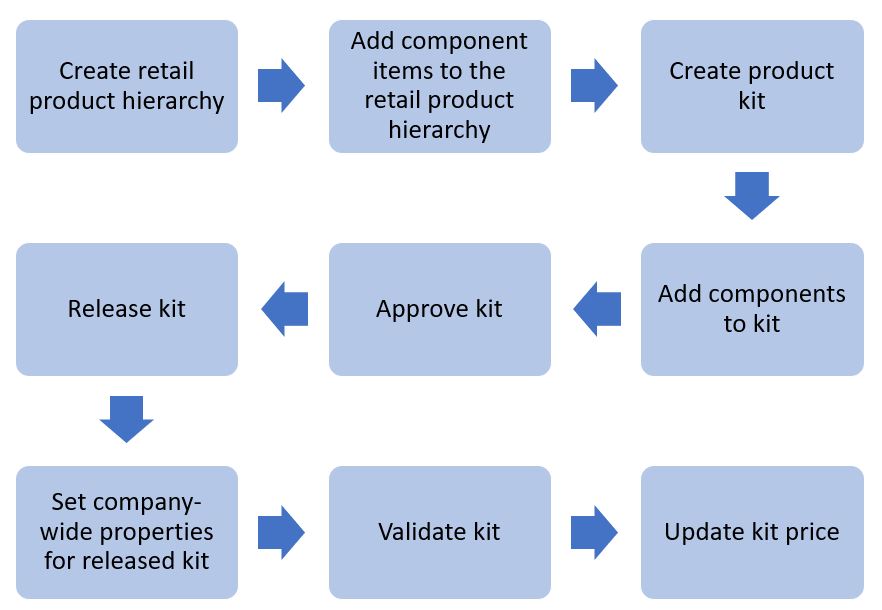Retail product kits
A retail product kit is a collection of items that are assembled in a single, sellable product. The products that are contained in a kit are finished products and could be sold separately from the kit, if needed. This factor is a key difference from Bill of Material (BOM) items that do not contain finished items to make up a sellable product.
Similar to products and product masters, kit items are configured as Product kits and then released to the different legal entities. The product kits are then available for additional configuration in the legal entities as Released product kits. Product kits are made up of components that can specify the quantity and special pricing of that component when it is used in the kit as opposed to separately.
To produce inventory for product kits, kit orders must be created so that the components’ inventory is decreased based on the kit quantities while the inventory of the kit item is increased. Kit orders are defined by specifying how many of the kit items you want to assemble in which warehouse. Kit orders contain configurations, each including different released products that allow for multiple kits to be configured at once.
Kit orders can be used for the disassembly and assembly of kits. Disassembly can occur within Commerce Headquarters (HQ) or within the Store Commerce to support a customer who wants to purchase a specific item within a kit that is not available outside of the kit. If the promotion for a kit is over, the items can be sold separately by disassembling the kit item. The disassembly process reduces the inventory of the kit items and increases the inventory for the separate items automatically based on the kit definition in HQ.
The life cycle for creating a kit in Commerce is shown in the following diagram.
